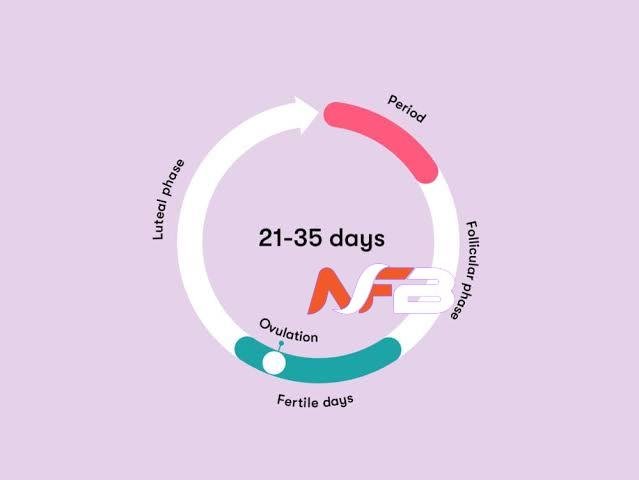Women should not overlook the menstrual cycle. Various phases during this cycle can significantly affect their mood, food cravings, skin, weight, and overall body. Hence, tracking periods can help you stay on top of your menstrual cycle. This practice can also help you keep your reproductive health and overall well-being in check.
Back in the old days, women who wanted to stay on top of their menstrual cycles used to take help from the old-fashioned way to track their period. The process was not so complicated as they required a pen and paper. Some also used calendars to ensure precise calculations. However, times have changed, and technology is here to help women track their menstrual cycle.
Now, women can easily use an online period calculator for precise calculations that are more trustworthy than the manual ones they used to do with a pen and paper. This article looks at various reasons to understand the menstrual cycle, its basics, and the method of using periodcalculator.io. So, without any further ado, let’s delve into this valuable discussion for women.
What Are the Basics of the Menstrual Cycle?
Those who know very little about the menstrual cycle should understand that it is a complex process that significantly changes the female body. It involves the release of various hormones and physical changes, which may lead to cramps, food cravings, and various other outcomes. The typical duration of the menstrual cycle is 28 days. However, it is worth mentioning that the duration may differ from person to person. So, it is safe to say that its duration may range from 21 to 35 days.
You can segment this complex process into multiple phases. Learning the basics of these phases will help you make the most of the calculations you will be making through the period calculator. This section discusses these phases to help you stay on top of everything related to tracking periods.
Menstrual Phase
This is the first phase of the menstrual cycle involving menstruation. The typical duration is between 3 and 7 days. If there is no pregnancy, the uterus lining will shed during this phase. This physical change during the menstrual phase leads to bleeding. Further details are given below.
Follicular Phase
This phase starts as soon as the uterus starts bleeding, so we can say that it overlaps the menstrual phase. In addition, it continues until ovulation and prepares the body for the phase that follows it. During this phase, the body prepares for potential pregnancy, and follicles mature in the ovaries. This phase could be the longest in a typical 28-day menstrual cycle and may last for 14 days.
Ovulation
It follows the Follicular phase and generally occurs when the menstrual cycle reaches its midpoint. Typically, one of the ovaries in the female body releases a mature egg for fertilization. However, in rare cases, ovaries may release two or more mature eggs within 24 hours of each other, which may lead to the possibility of the birth of twins or triplets. While ovulation may start on day 14 of a 28-day menstrual cycle, its occurrence may vary from person to person, depending on physical requirements.
Luteal Phase
This is the final phase of the cycle. During this phase, hormones like Progesterone are produced by the body. Their job is to prepare the lining of the uterus for pregnancy. If the egg released by the ovaries doesn’t get fertilized, the level of such hormone starts declining, and the body returns to the menstrual phase. The cycle keeps on repeating until the mature egg released by the ovaries gets fertilized.
Why is Keeping Track of Periods Important?
Since you have learned the menstrual cycle basics, it is time to know why it is important to keep track of periods. This section highlights the importance of using an online calculator to track periods. Read on to learn more.
- Helps you stay on top of reproductive health.
- Assists in identifying patterns.
- Helpful in managing symptoms.
- Assist you in preparing for physical changes due to the menstrual cycle.
- Helps women determine their fertile window and identify the best days to conceive.
- Keeping track of periods can help women identify hormonal imbalances.
- It also keeps women aware of other conditions that require medical attention.
How to Use an Online Period Calculator?
Now, we come to the most important part of our article, which tells you how to use an online period calculator to help you stay on top of your menstrual cycle and easily prepare your body for it. It is worth mentioning that an online period calculator is a tool capable of predicting various phases of your menstrual cycle. It also helps you stay aware of ovulation days and next periods. It can be a perfect solution to help you identify and understand the patterns of your body and prepare well accordingly. However, you must ensure the use of a reliable online period calculator for this purpose. Here is the step-by-step method for using such a tool.
- Input accurate data into the given fields.
- Make sure you add the precise date marking the first day of your last period.
- Add the average length of your menstrual cycles.
- Input the accurate duration of your period by specifying the number of days.
- Tap on the ‘Calculate’ button.
- You will get all the necessary details about your menstrual cycle.
- The details you will see will highlight your period days.
- The displayed calendar will also show the most probable ovulation days.
In the End
Women should keep track of their reproductive health and overall well-being. The repeated occurrence of the menstrual cycle throughout a significant part of their lives is an undeniable fact. This process leads to significant physical changes and the generation of hormones. Women should prepare for this process to stay on top of everything. An online period calculator could be their best friend in this practice. This article has discussed everything in detail to help women prepare for the cycle well. Hopefully, they will find this article useful!












Leave a Reply